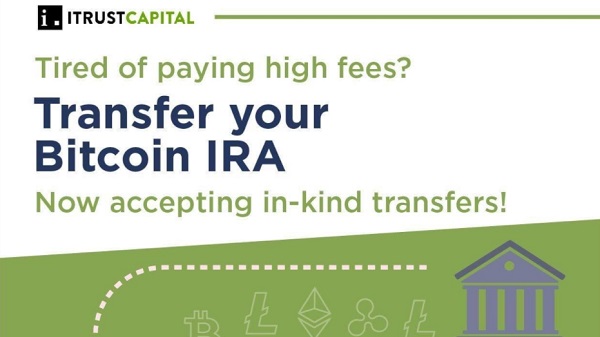
Key Takeaways
Coinbase is changing its listing procedure in a bid to prevent front-running and insider trading.
Moving forward, the exchange will only publish its listing decisions before undertaking technical integrations to prevent broadcasting any on-chain data signals that front-runners could leverage.
Despite being ferociously criticized, Coinbase says it will continue listing “every asset that is legal and safe to do so.”
Share this article
Coinbase CEO Brian Armstrong has addressed recent accusations of insider trading and foul play surrounding the exchange’s tokens listings. The exchange has said it intends to continue listing any token as long as it’s “legal and safe to do so.”
Coinbase to Crack Down on Asset Listing Front-Running
The biggest U.S. crypto exchange is changing its listing process.
In a Thursday blog post, Coinbase CEO Brian Armstrong addressed the widespread concerns within the community concerning the exchange’s listing process. He said that the company is making changes to close any potential loops that could let insiders front-run its asset listings, but it won’t revise its reviewing process.
Coinbase listings often cause price spikes in the market once an asset goes live. In the past, sophisticated traders used on-chain data and differences in the platform’s API responses to anticipate new asset listings. They would then front-run the listing by purchasing the coins elsewhere and sell them immediately upon the Coinbase listing, banking on a price surge following the listing announcement. On-chain evidence of such examples has circulated on Twitter on many occasions.
“While this is public data, it isn’t data that all customers can easily access, so we strive to remove these information asymmetries,” Armstrong said in the blog post, explaining how the exchange is planning to mitigate the issue. He said that Coinbase would publish its decisions to list an asset after it makes them and before undertaking any technical integration to prevent any leakage of on-chain data that front-runners could leverage. The exchange will also start labeling riskier assets, implement ratings and community reviews for each listed asset, and invest more in screening assets and detecting potential front-running, potentially taking tokenonomics and on-chain data into consideration before listing a coin. “We won’t catch everything, but these investments will help us get better,” he concluded.
In addressing the widespread suspicions of insider trading by employees at Coinbase, Armstrong conceded that there is always a chance that someone inside the company could “wittingly or unwittingly, leak information to outsiders engaging in illegal activity.” However, Coinbase stated it has “zero tolerance” for insider trading and will not hesitate to immediately fire any employees caught aiding and abetting any nefarious activities.
Questionable Asset Listings
While the exchange has faced fierce criticism from the crypto community over its asset listing criteria, Armstrong doubled down on its approach in his post. “At Coinbase, our goal is to list every asset that is legal and safe to do so,” he said, claiming that the exchange had no business in picking winners and losers.
Earlier this month, Coinbase came under heavy fire after UpOnly host and influential crypto trader Cobie publicly called the company out for listing relatively unknown, dubious projects with low market capitalizations, such as StudentCoin, Polkamon, and Big Data Protocol. Notably, Coinbase has neglected to list many other assets that play a crucial role in the cryptocurrency ecosystem, such as Terra and Fantom.
Big Data Protocol, virtually completely dead prior to listing blog post, has pumped 132% as a result of this news!
Following this pump it’s market cap is now $3.3m
So when Coinbase were considering the addition, it had only a $1.5m market cap! Coinbase… 1.5m rly? LMAO pic.twitter.com/3WMihVKNdY
— Cobie (@cobie) April 12, 2022
“Big Data Protocol, virtually completely dead prior to [the Coinbase] listing blog post, has pumped 132% as a result of this news!” Cobie wrote, stressing that the coin had a market capitalization of only $1.5 million before the listing.
That wasn’t the first time Coinbase has listed questionable assets in favor of larger, more established projects. In February, the company was criticized for listing Pawtocol, another low-cap coin that claims to use blockchain “to improve the lives of pets and pet owners on a global scale.” Per data from CoinGecko, Pawtocol briefly rallied on the news but has since tanked, now more than 50% down since the listing and 84% short of its all-time high.
Disclosure: At the time of writing, the author of this piece owned ETH and several other cryptocurrencies.
Share this article
The information on or accessed through this website is obtained from independent sources we believe to be accurate and reliable, but Decentral Media, Inc. makes no representation or warranty as to the timeliness, completeness, or accuracy of any information on or accessed through this website. Decentral Media, Inc. is not an investment advisor. We do not give personalized investment advice or other financial advice. The information on this website is subject to change without notice. Some or all of the information on this website may become outdated, or it may be or become incomplete or inaccurate. We may, but are not obligated to, update any outdated, incomplete, or inaccurate information.
You should never make an investment decision on an ICO, IEO, or other investment based on the information on this website, and you should never interpret or otherwise rely on any of the information on this website as investment advice. We strongly recommend that you consult a licensed investment advisor or other qualified financial professional if you are seeking investment advice on an ICO, IEO, or other investment. We do not accept compensation in any form for analyzing or reporting on any ICO, IEO, cryptocurrency, currency, tokenized sales, securities, or commodities.
See full terms and conditions.





Be the first to comment